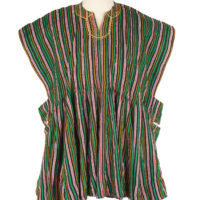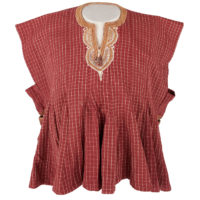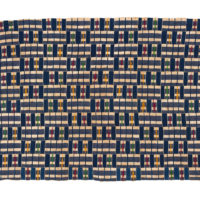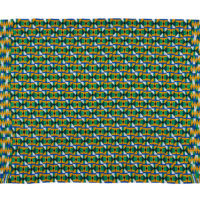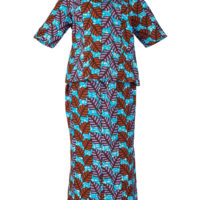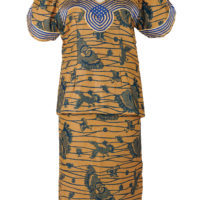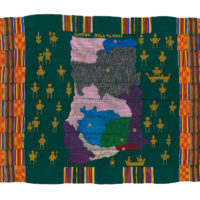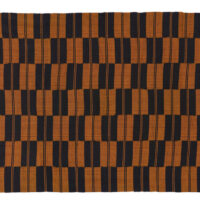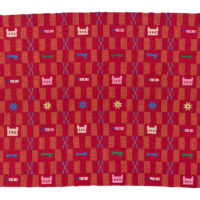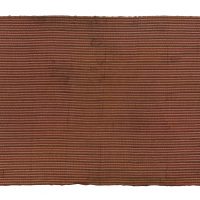
R6079 Textile; Kente
This men’s narrow strip woven kente cloth was made by Ewe weaver John Kwasi Dometi in 1980. This type of cloth is called ‘Worgbale’, or python skin. The cloth was owned by Jonathan ‘Old Man Young Boy’ Akakpo, and was created for him by the weaver who was father to Esther Dometi, Jonathan’s late wife. Read More …
